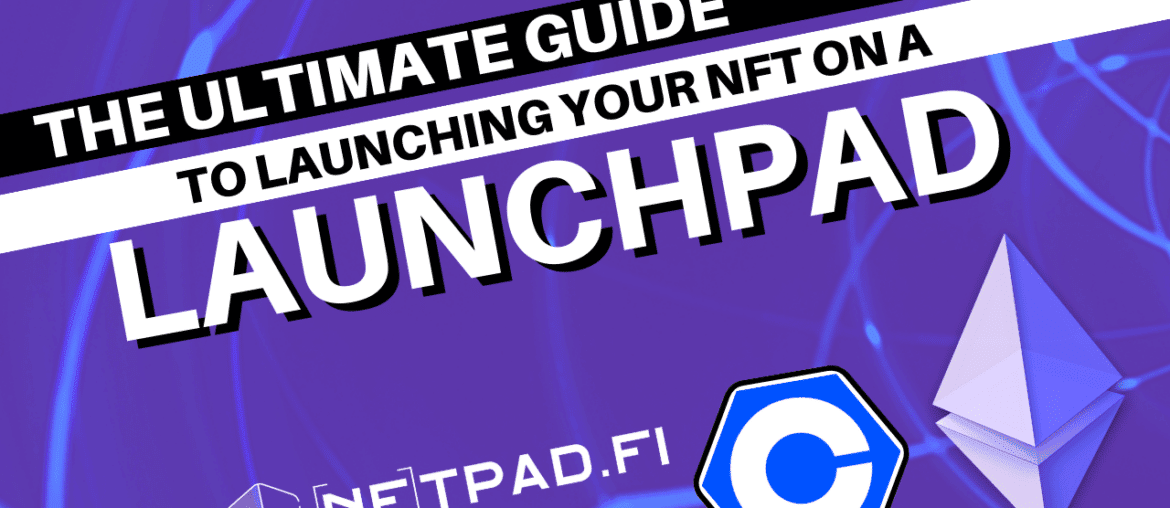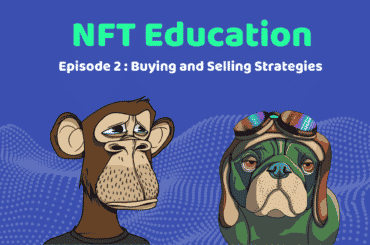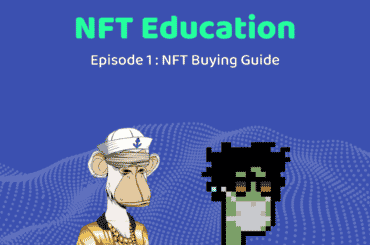In the last few years, non-fungible tokens (NFTs) have captured the imagination of the public through record sales and digital artists that have merged art with blockchain technology. This mainstream adoption has caused NFT growth to skyrocket, and as of September 2022, around 6.6 million Americans owned an NFT.
The emerging NFT market has led to creators and artists developing their own NFT collections with the goal of cashing in on the current craze. In this article, we’ve included a comprehensive guide to help prospective creators launch their own NFT on a launchpad.
Table of Contents
Introduction to NFT launch and its importance in the digital assets market
While many NFT fans enjoy browsing marketplaces to view the latest collections, few understand the work that goes into developing a successful project. NFT launchpads – cryptocurrency platforms that allow NFT creators to showcase their work and generate investment from interested parties that are attracted to their idea or concept – are crucial to the industry.
It can be helpful to think of NFT launchpads as crowdfunding platforms where artists can gain exposure to large audiences, market their work, and receive much-needed funds for its eventual launch. Many of the best NFT launchpads also enable the minting and storing of NFTs.
Because minting an NFT on a launchpad platform is often cheaper and more cost effective than using a smart contract and an NFT marketplace, many creators choose to launch their work directly on these sites. In these cases, the community not only gets the chance to discover a new project but gets early access to the presale when it’s finally released.
Step-by-step guide on launching your NFT on a launchpad
Selecting Your Item
The first step to any NFT launch is to select the digital asset that you want to be turned into an NFT. Since the theme for an NFT collection can be based on virtually any subject, creators should look to paintings, pictures, music, video game collectibles, memes, GIFs, or even tweets for inspiration.
Whatever concept an NFT developer chooses, they should ensure that they own the intellectual property rights to their item before its turned into an NFT. Creators that skip this step could face legal issues down the road once their NFT goes mainstream.
Determining Your Blockchain
After selecting the theme and design for a collection, creators should think about which blockchain their NFT should run on. A blockchain is a digital ledger that records transactions, and the technology underpins not only NFTs but the entire crypto space.
Since there are many different blockchains in existence, developers will have to think about the pros and cons of each network before deciding which one to use. Interoperability, gas fees, global reach, transaction speed, security, decentralization, and reliability are all factors potential creators should consider.
The Ethereum (ETH) network is currently the most popular option for NFTs, but other common blockchains include Tezos, Polkadot, Cosmos, and Binance Smart Chain. Below is a list of the most popular blockchains for minting NFTs:
Top Blockchains for NFTs
- Ethereum
- Solana
- Binance Smart Chain
- Cardano
- Worldwide Asset eXchange (WAX)
- NEAR
- Plam
- Tezos
- Flow
Choosing the right launchpad for your NFT launch
The next step in the process is arguably the most important since NFT creators will have to rely on the tools, expertise, and technology of the NFT launchpad that they choose. NFT developers should keep in mind that every launchpad caters to a different audience and has different strengths and weaknesses.
We’ve listed some of the most popular NFT launchpads below along with a brief description of what they specialize in.
FLOLiO
One of the top emerging launchpads in the space, FLOLiO’s NFT launchpad can be accessed through the site’s Creators Hub, which offers project developers a platform to track conversions and showcase their projects through advanced Web3 performance marketing tools.
Unlike many NFT launchpads, FLOLiO has a comprehensive affiliates program that connects creators and artists with other NFT enthusiasts who take an interest in their projects. Affiliates can prove essential in amplifying sales and exposing projects to new communities.
The beauty of this system is that creators can find collectors that love their work and only pay them when they improve sales and successfully promote their project.
NFTb
Widely regarded as the best NFT launchpad in the industry, NFTb states its mission is to “create a platform for creators to access opportunities in DeFi with the best user experience for anyone, anywhere.” The site is always looking for promising NFT projects to feature, and usually attracts projects that focus on artwork, games, trading cards, and other digital collectibles.
NFTPad
Another site that makes our best NFT launchpad list, NFTPad is a launchpad for blockchain games, art, and decentralized finance (DeFi). NFTPad describes itself as a platform that “allows users to mint NFTs in minutes, auction them, or raise liquidity so that they may be traded on AMMs such as PancakeSwap and Uniswap.”
Gamestarter and Enjin Starter
When it comes to gaming, Gamestarter and Enjin Starter are two of the best NFT launchpads in the space and offer frequent initial game offerings (IGOs) to community members. Each game launchpad provides complete support for new NFT games, including token launches and in-house NFT marketplaces.
Crypto Exchange Launchpads
While independent launchpads are currently the most popular type of launchpads, it’s necessary to include some of the larger crypto exchanges on our best NFT launchpad list. Currently, several large crypto exchanges host launchpads, including KuCoin, Binance, and Coinbase.
Although these sites have many different features and have not committed exclusively to their launchpad offering, their higher traffic means that projects will usually receive high exposure and consequently higher conversion rates.
Uploading Your File
Once a creator has decided on a marketplace, they can follow the steps listed on their chosen site to upload their digital file to the platform. Most sites accept digital files in the form of a PNG, GIF, or MP3.
Preparing for a successful NFT launch: best practices
Create a compelling narrative
Every NFT collection needs a story behind it that drives interest and makes buyers feel like their part of a larger community that shares a common purpose. This is essential not only to generate interest among investors during the fundraising phase but to maintain a high level of buzz after a project launches.
For instance, the famous CloneX collection partnered with Nike to release customized, physical sneakers that matched the digital sneaker NFTs included in the collection. Other NFT projects, such as Catblox, have incorporated a story mode that lets holders solve puzzles to win prizes.
The famous Bored Ape Yacht Club did not become world-renowned by accident. This project was launched with a wider vision that goes beyond the fiction of futuristic, wealthy apes meeting at a yacht club. BAYC has created an exclusive community for members that can only be accessed by buying their NFTs.
Provide a detailed road map
Every creator should outline their future plans in a detailed road map to inform investors of when certain milestones will be hit and how they will keep the community engaged in the future.
Every good project includes a timeline where potential users can discover all the benefits of being early buyers. The communities found on NFT launchpads will want to know when and how they can expect to receive some returns on their investment.
Tailor your NFT to your target audience
Creators who choose to target everyone with their NFT will likely fail, while those who seek to attract a specific audience will succeed, and in time expand into other communities when their project generates interest.
Developers that try to appease every group will almost always waste time and resources since there are so many NFT collections competing for buyers’ time and attention. Knowing your target customers can help you create an NFT that appeals to their buying preferences.
In the end, creators should identify their target audience, segment it, and fine-tune their marketing campaign. It’s important to remember that a target audience may consist of different groups sharing the same characteristics.
Questions to help creators understand their audience:
- What is the main idea behind your NFT collection?
- Is it a collection or a single piece?
- What is the aesthetic and subject of your NFT?
- What communities are you taking part in?
- Does your project have an active community of followers on any social channels? If yes, who follows your channels?
- Have you sold your NFTs? If yes, who bought them?
Set a fair mint price and royalty
While creators may have to defer to the NFT launchpad hosting their sale when it comes to pricing, developers are usually able to work with the launchpad to set a price for investors.
This initial price is crucial as an overpriced project could deter certain groups of investors who lack the funds to buy into the collection. On the other hand, a project priced too low could be viewed as a lower-quality collection that lacks an attractive long-term vision.
Royalties
Project creators must also think about royalties, a potential long-term perk of an NFT collection. Instituting a royalty allows creators to earn a share of the revenue generated whenever the NFTs are resold on the secondary market or an NFT marketplace.
Depending on the longevity of an NFT project, creators can often generate more money from royalties earnings than during a launch. However, developers should ensure this royalty amount is not excessive so that holders can still generate enough profit when they sell their NFTs.
Marketing and promotion strategies for your NFT launch
Organic Marketing Strategies: Promote the Utility Behind Your NFTs
In the NFT space, it is not enough to create utility and a unique storyline. To separate themselves from the tens of thousands of projects in existence, creators will need to effectively market their projects to let the NFT world know about this utility and explain why they should buy the NFT in question.
Twitter Spaces
Twitter is one of the most popular mediums to market NFTs, and Twitter Spaces might be the site’s most effective feature. During Twitter Spaces, creators can discuss their projects with key figures in the NFT space, including developers, potential investors, and influencers. By engaging in these conversations, creators can hone their sales pitch while receiving feedback from the public.
If a project gains notoriety or its creators begin to amass a social media following, then project developers can start to think about hosting their own Twitter Spaces. This will allow them to grow their own audience and move beyond the audience of the influencers that host them.
Websites
Detailed and informative websites are crucial to attracting and engaging potential buyers who are interested in joining the community. Every project website should be able to provide information about the NFTs being sold, such as their rarity, unique features, and price.
Additionally, websites can help buyers view and purchase NFTs through an NFT launchpad, NFT marketplace, or online auction. Being able to view past sales and upcoming NFT projects or NFT launches in the collection is also useful in generating interest and keeping buyers informed.
Paid Marketing Strategies: Choose Platforms Relevant to Your NFT Utility
Many successful NFT projects utilize paid advertising to showcase their upcoming NFT launches on social media platforms. When considering this method, creators should understand that every social media site contains different audiences – meaning that a blanket campaign will often be ineffective.
As a result, creators should ensure that the type of project they’re advertising matches up to a relevant platform. Since play-to-earn games work well on YouTube, creators of a play-to-earn game should target the site while excluding less relevant sites such as Facebook and Instagram.
Top Social Media Platforms to Generate Interest
- Meta (Facebook and Instagram)
- Quora
- YouTube
- Discord
Consider working with Web3-native agencies
Many creators feel overwhelmed with marketing duties and work with a marketing agency to increase their exposure and ensure they aren’t making any mistakes. As there are many agencies around today that specialize in Web3, creators should seek to hire these groups since they know the most effective ways to reach Web3 audiences.
It’s important to keep in mind that Web 3 marketing firms are expensive, and a creator will often have to pay above the market rate to contract one of these agencies to advance their NFT project.
Managing and distributing the proceeds from your NFT launch
Investment Risk
Although many NFT projects succeed and generate substantial revenue for their creators, there’s always a risk that a project will not receive the necessary investment from launchpad members and ultimately fizzle out.
Not every NFT project will become popular with the general public, and with the multitude of fees associated with listing a collection on a launchpad and the NFT minting process, creators need to prepare for the possibility that they could money on their NFT project.
Distributing the Proceeds
Successfully launching an NFT project means that creators are faced with the problem of distributing the proceeds from their NFT drop. While most NFT launchpads will stipulate the percentage that should be returned to their community members after a project makes a profit, there are different ways this can be accomplished.
Smart Contracts
A smart contract is a computer program that automatically executes a command once certain terms of an agreement are met. For example, a developer could create a smart contract that would automatically return some of the profits back to NFT holders once a certain amount of revenue had been collected.
Smart contracts can be used to distribute funds to multiple parties, such as the creator, the project team, and any partners or investors.
Cryptocurrency Wallet
Cryptocurrency wallets can be used to store, manage, and control the proceeds from NFT sales. While creators will have to manually distribute these funds between parties, every wallet has its own private keys and provides an added layer of security.
Security and compliance considerations for NFT launch
Auditing the software: Every NFT creator should hire a reputable software auditing firm to confirm that there are no errors or weak points in their codes when selling NFTs.
Sell NFTs on a reputable NFT marketplace or launchpad: As previously discussed, NFT launchpads differ in regard to their size, audience, security, and reputation. Choosing a launchpad that has a dedicated security team and has taken steps to prevent hacks and other fraud should be a top priority for creators.
Future prospects and innovation in NFT launch
Scale your NFT launch through the metaverse
At the start of 2021, the metaverse went from a little-known crypto term to a concept that symbolized the emergence of exciting digital worlds. Many are not aware that the metaverse offers a unique opportunity to showcase an NFT creation and drive interest among their community.
For example, developers could create a metaverse NFT marketplace fully integrated into a virtual world. In this setting, the public could attend virtual parties or metaverse events that showcased the project’s NFTs or sell them in exchange for cryptocurrency.
Setting up an NFT-based community in the metaverse will generate a myriad of sales opportunities and better support the project’s overall strategy.



